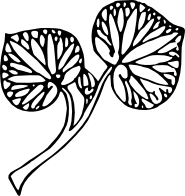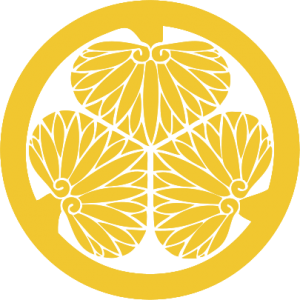Recreational research into Feudal Japan
Mon of the Week: Hollyhock
Continuing our pass through 15th century rural samurai mon,(KJ:7) this week we have a straightforward one. It shows two hollyhock leaves with a bud, arranged representationally.
Unlike the previous few weeks’ mon, this design has been preserved almost unmodified through the centuries; compare this similar modern mon.(IEJFC:8)
One interesting thing about the Japanese used to describe mon is that, while mon descriptions are basically standard Japanese, small changes in the description can be significant. Here, the two leaves are counted as 二葉/futaba, or “two leaves”. Mon counted in this way use representational designs. In later times, geometric designs became more popular; these might be described similarly, but counted with 二つ/futatsu, or “two things”. In essence, the difference is between a “two-leaved hollyhock” and “two hollyhock leaves”. You can see the difference in the Tokugawa mon, which uses the つ/tsu counter.
Comments are closed.



